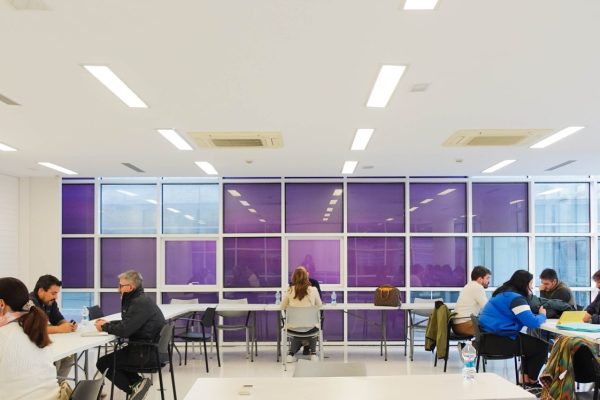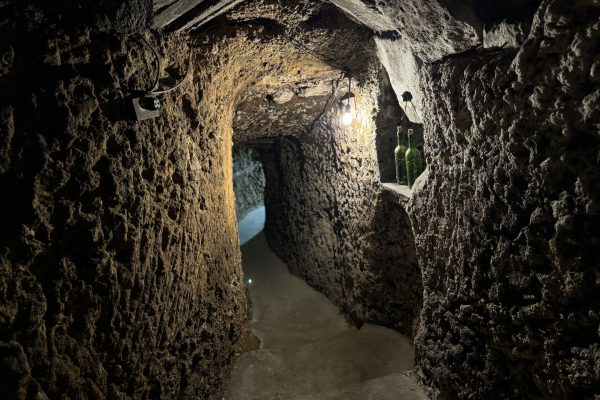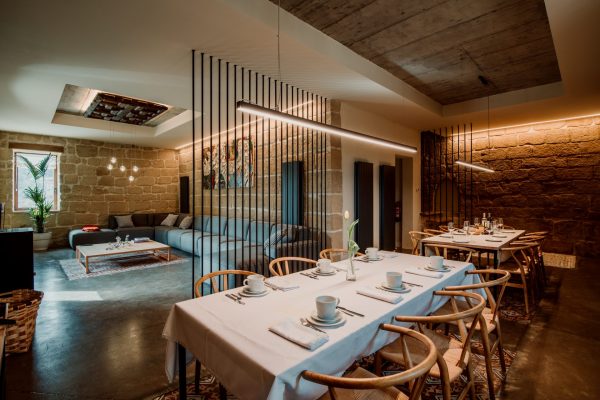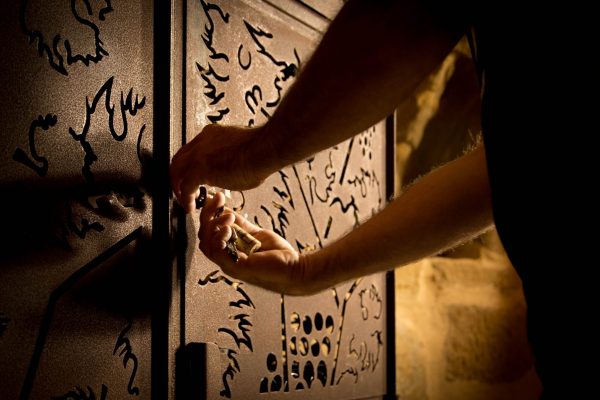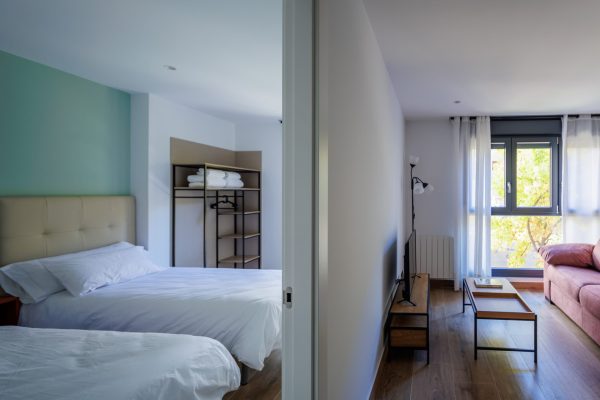What to see in Haro is the first thing many visitors ask themselves when they arrive in La Rioja. one of the most visited in the region as it is considered the Capital of Rioja.that is, the capital of the Rioja designation of origin.
Strolling through its streets you can discover the Haro's glorious past, as well as everything else this small town in La Rioja has to offer its citizens and visitors.
- 1. La herradura tapas area in the historic quarter of Haro
- 2. Main streets to see in Haro
- 3. The Barrio de la Estación and the main wineries in Haro
- 4. Historical monuments to see in Haro
- 5. Parks and picnic areas in Haro
- 6. The Hermitage of San Felices de Bilibio in Haro
- 7. When is the Wine Battle and other Haro Festivals?
- 8. What to do in Haro to make the most of your visit?
1. La herradura tapas area in the historic quarter of Haro
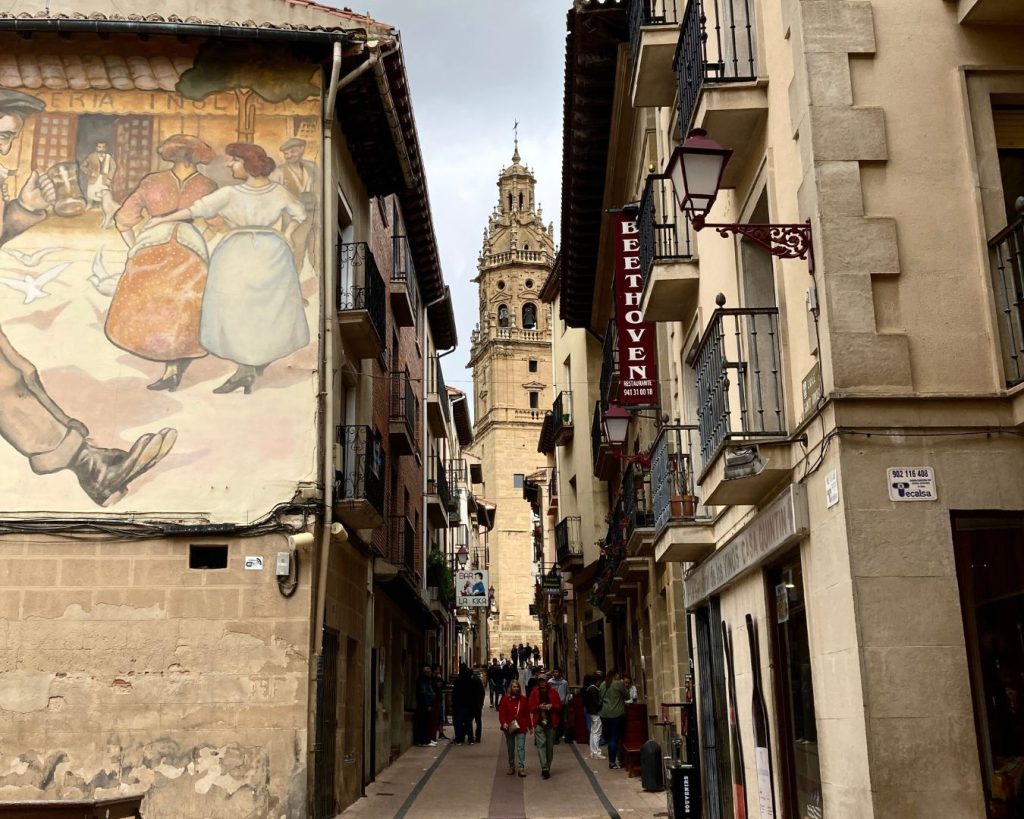
The traditional tapas area of Haro is called La Herradura by drawing the streets that comprise it into a shape similar to that of a cattle shoe.
The tour starts at the Peace Square following the Santo Tomás Street leading to the Church dedicated to the same saint, once there, turn left and you will reach the St Martin's Square where the tour continues along the San Martin Street back to the Plaza de la Paz.
Without a doubt, this is a good option for getting to know the historic centre of Haro where some of its oldest buildings can be found. Walking through these streets you can imagine what Haro was like in the 18th century when this area was at its most splendid.
The other tapas area is located in the new part of the town known as the the Mazo area, where stone buildings give way to new constructions and the narrow, labyrinthine streets of the old town give way to wide avenues.
2. Main streets to see in Haro
Haro is a small town of barely 12,000 inhabitants which triples its population during the summer months to over 30,000.
This small town size makes it an ideal place for walking it The distances are short and so we can take advantage of a walk through the most emblematic streets of the city.
We have already mentioned the Plaza de la Paz, the centre of the city par excellence where the City Council and from where the historic centre crossing the Arch of San Bernardo, and entering a small labyrinth of streets and alleys as is the case in most old quarters. Highlights include the Parish Church of Santo Tomás .
Also from the Plaza de la Paz begins the Calle de la Vega leading to the Gardens of La Vega and the Basilica of Nuestra Señora de la Vega Patrona de Haro, one of the streets where the economic boom that the city experienced at the end of the 19th century can be seen most clearly, including the building that housed the Banco de España branch even though Haro is not a provincial capital.

The Street Siervas de Jesús takes you to the Pardo viewpoint, where the railway tracks and the river Ebro run in the distance offering a beautiful panoramic view of the surroundings.
From the Plaza de la Paz which, as we have said, serves as the epicentre for the visit to the city, you reach the Barrio de la Estación going down Calle Navarra and crossing the river Tirón by the stone bridge or by the recently inaugurated tourist footbridge.
3. The Barrio de la Estación and the main wineries in Haro
Haro's Barrio de la Estación is home to the largest concentration of century-old wineries in the world and came into being thanks to the railway station.
In the 19th century, the vineyards of France suffered from the phylloxera plague Haro, due to its geographical location and good communications, became the perfect place to produce all the wine that our French neighbours could not supply.
This is how this peculiar ecosystem of wineries around Haro railway station which today is one of the city's main tourist attractions, especially for those who come to enjoy Rioja wine.
Every two years "La Cata del Barrio de la Estación" is held in mid-June and the next edition, 2024, is already sold out.
4. Historical monuments to see in Haro
Haro has a handful of buildings that stand out for their historical value. Below you will find the most relevant ones.
4.1. Haro Town Hall and the Plaza de la Paz

Presiding over the Plaza de la Paz is the building of the City Council with the coat of arms of the city and the inscription "Reigning Charles III YEAR OF MDCCLXIX.
Subsequently, in 1857 the clock at the top of the main façade.
The arches with barrels have become the city's photocall par excellence in recent years.
4.2. Bendaña Palace and Haro Tourist Office
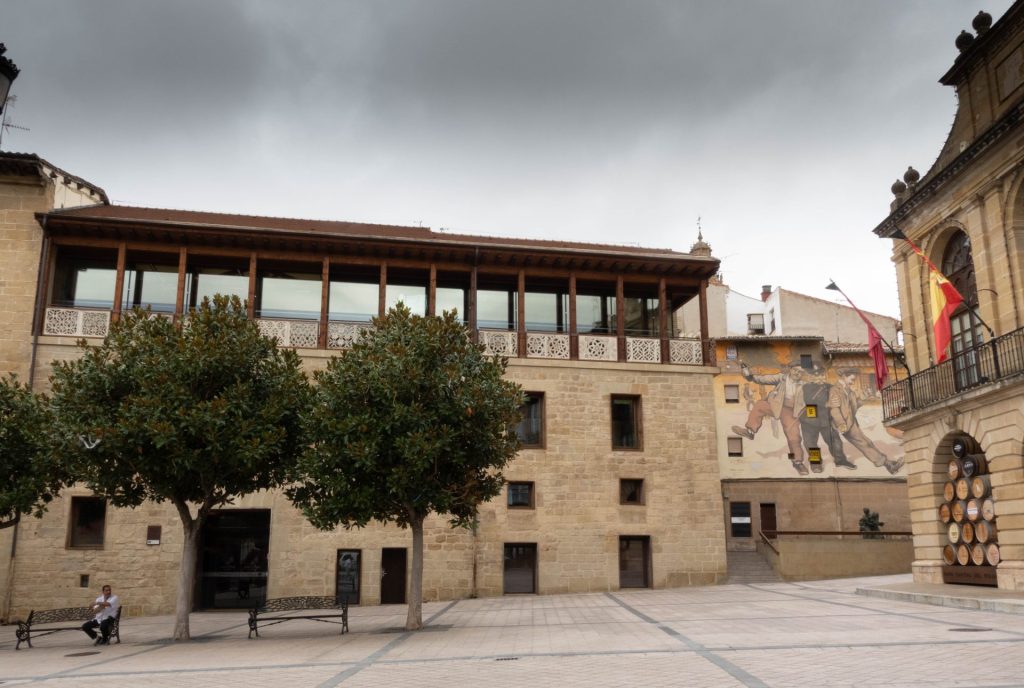
We continue in the Plaza and built in the 16th century in the Plateresque style we find the Palacio de Bendaña, which has housed the tourist office since 2013. and the library.
There you can get a map of Haro and the surrounding area, as well as request information about opening hours and other topics of interest.
4.3. Museum of the Tower and Arch of San Bernardo
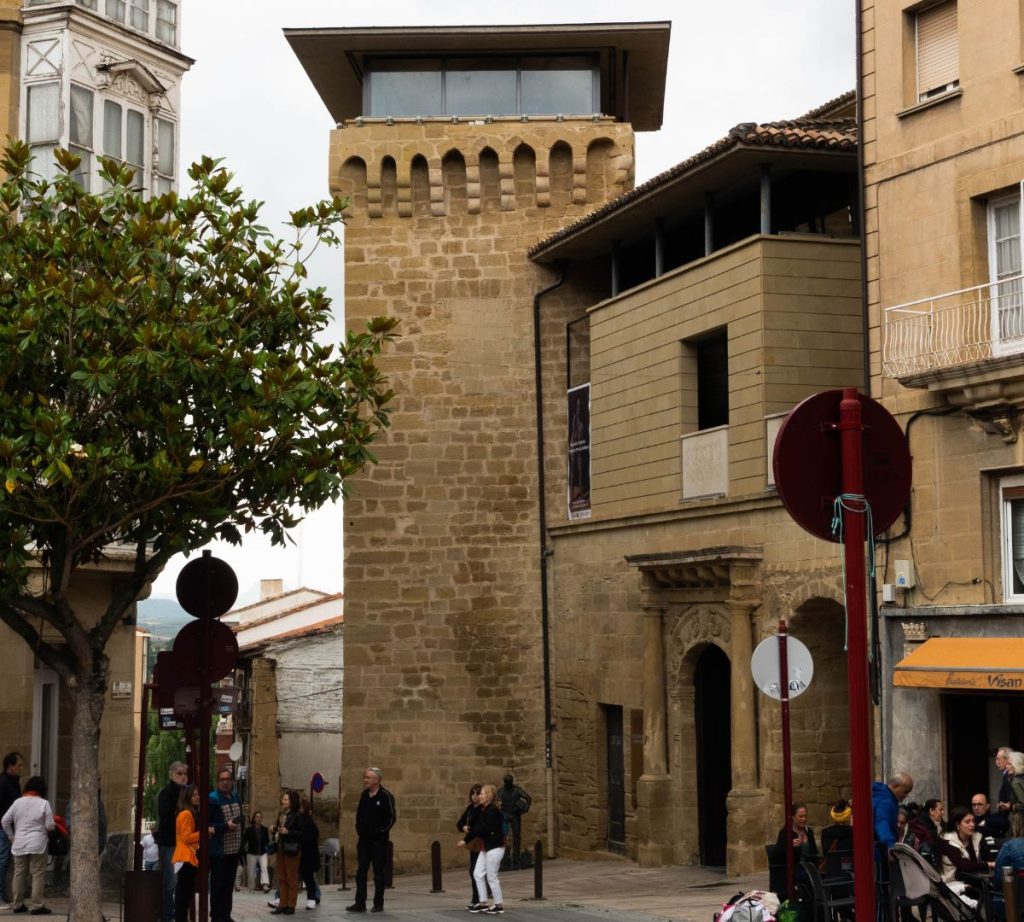
Without moving from the Plaza de la Paz, one of the buildings to see in Haro is the Torreón Museum located next to the St Bernard's Arch, one of the gates to the Villa.
The museum is dedicated to contemporary art, with permanent and travelling exhibitions, and it also holds a treasure that not everyone knows about, and that is the lookout point at the top of the tower, with a fantastic panoramic view of the Plaza de la Paz and the surrounding area.
4.4. Parish Church of Santo Tomás Apóstol in Haro
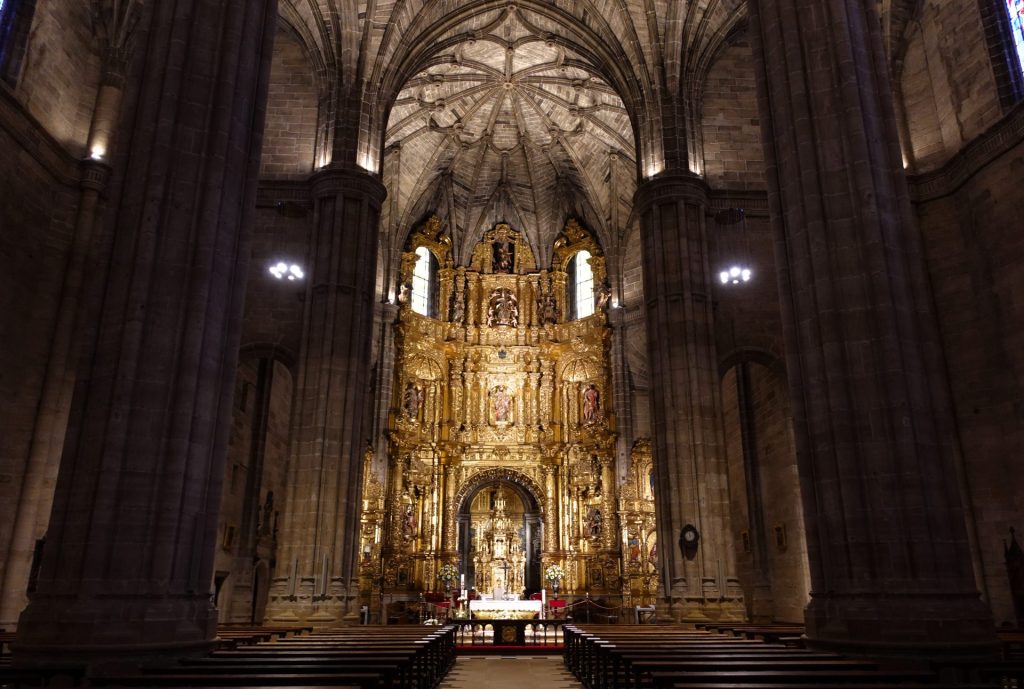
Taking the Santo Tomás street that starts at the Plaza de la Paz you arrive at the Parish Church of Saint Thomas the Apostle at the foot of the hill known as La Atalaya.
Built on the site of an earlier temple, of which the main doorway in Plateresque style.
The work on the ship and the tower lasted more than 2 centuries from 1512 to 1725.
The parish opens its doors to tourists from Tuesday to Sunday from 11h to 13:30h and from 17h to 19:30h during the summer.
4.5. Basilica of Our Lady of the Vega
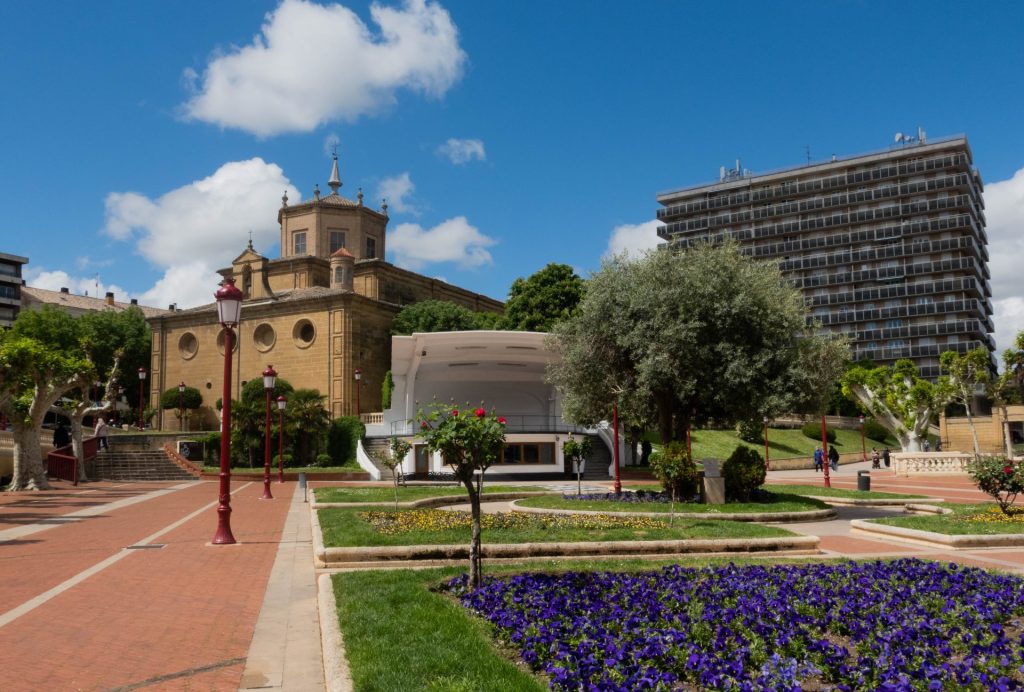
It is believed to have been built in the 10th century and has undergone several enlargements since then.
In Baroque style, the most outstanding feature is the altarpiece of the High Altar built in 1740.
The image of the Virgen de la Vega, Patron Saint of Haro, is Gothic in style and dates back to the 14th century.
The Basilica has a museum where its traditions and heritage related to the Patron Saint are exhibited.
4.6. Haro Oenological Station
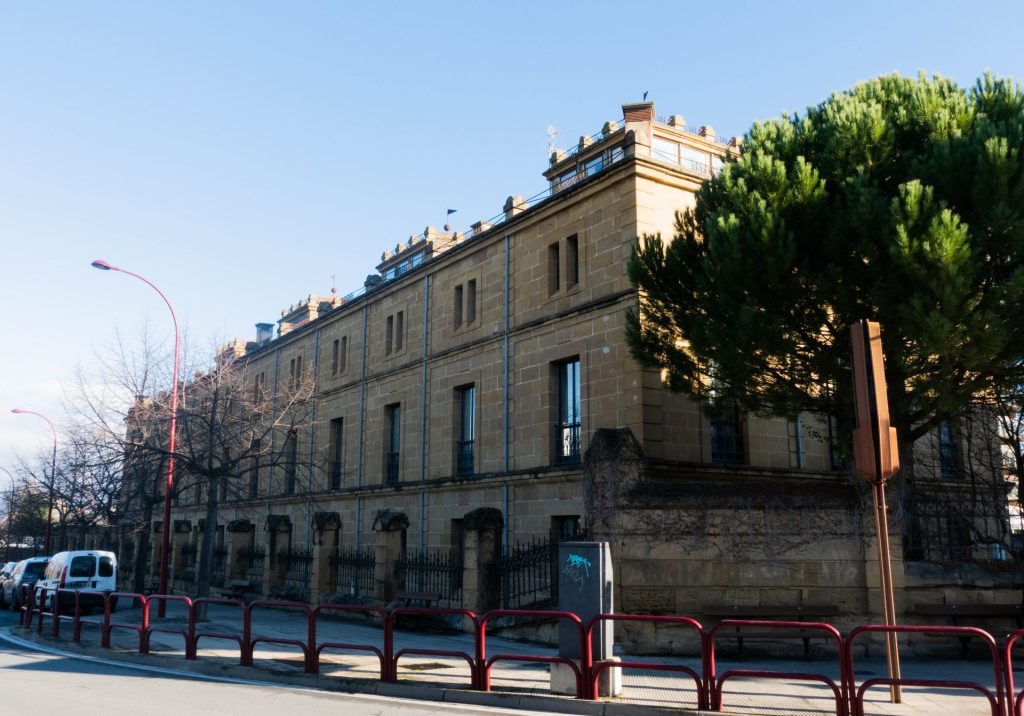
The Haro Oenological Station was created in 1892This was the result of the need to expand into new markets and the urgent need to bring Rioja winemakers up to date with new winemaking methods.
In 1983, the Haro Oenological Station took over part of the functions transferred by the State to the Autonomous Community of La Rioja in the field of oenology and viticulture. It is from then on that the centre underwent a thorough remodelling aimed at modernising its facilities, furniture and the adaptation of its wine cellar and creation of the Wine Museum.
It is currently in the midst of adaptation works 8m in its three buildings, which are expected to be completed in the third quarter of 2026.
5. Parks and picnic areas in Haro
The good weather encourages spending time in the street and what better plan for the more adventurous than a picnic in nature, or a simple stroll enjoying the scenery and getting to know areas of Haro less visited by tourists.
5.1. El Mazo Park
The new area of Haro has El Mazo Park next to the Luis de la Fuente Stadium.
It is about a large park which is currently embarking on an ambitious refurbishment plan that will last several years.
Next to this park there is also an area of canine recreation.
5.2. Fuente El Moro in Haro
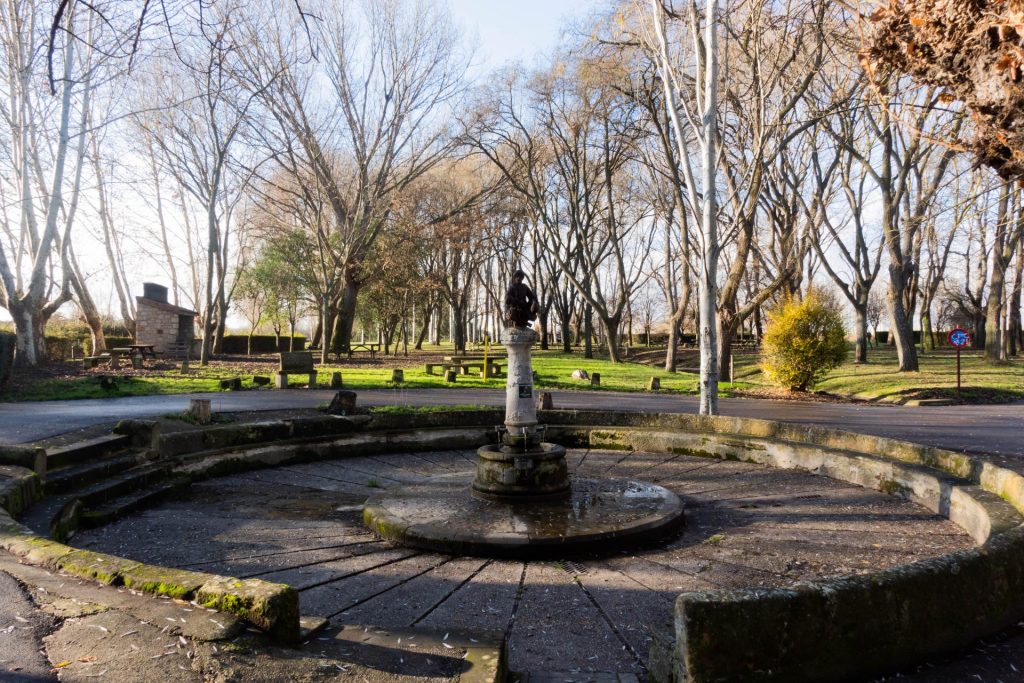
Fuente el Moro is a place of pilgrimage for the jarrero people (that's the name given to those born in Haro) every September in what they call "La Jira".
It is about a park on the outskirts of town with tables and space for young and old to enjoy.
Of course, in the centre of the park is the Fuente del Moro (Fountain of the Moor), a monument in itself worth visiting.
En torno al 9 de septiembre se celebra «La Jira» una comida campestre que pone fin a las fiestas patronales de Haro y que tiene lugar en este paraje.
5.3. El Viano natural bathing area

On the other side of the road from Fuente El Moro is the Viano area, with its own picnic area and a path along the banks of the river Tirón. with beautiful natural bathing areas to cool off in summer.
*See other bathing areas in La Rioja.
5.4. Félix Rodríguez de la Fuente Park
On the way out of Haro towards Zarratón is the Félix Rodríguez de la Fuente Park known to the people of Haro as "Los PatosThe "due to the animals of this species that inhabit the small swamp that houses the park.
6. The Hermitage of San Felices de Bilibio in Haro
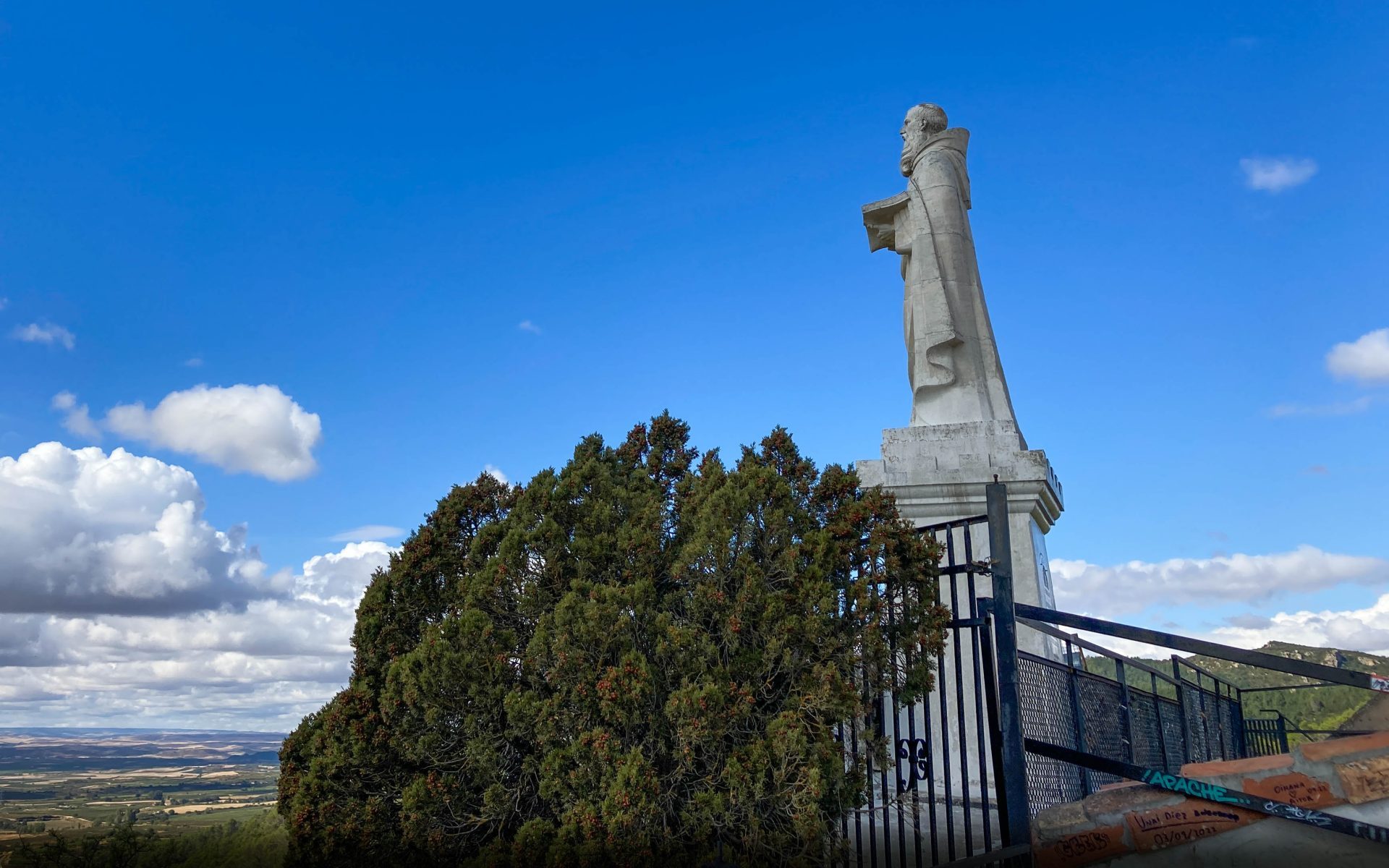
It is known worldwide The Battle of the Wine which takes place in the early morning of 29 June in Haro, more specifically, on the Bilibio cliffs, in the Hermitage of San Felices.
This site is located 6km from HaroThis is undoubtedly for many the most special corner of Haro due to its uniqueness.
In the lower part there is a multitude of shaded picnic tables and enjoy a meal or a good chat. However, it is at the top of the cliffs that the Hermitage and the image of San Felices which is visible from afar.
Stairs to the top every nook and cranny is a place to pause and observe. The Conchas de Haro, the quarry, the vineyards, the mountain... until you reach the Hermitage.
From the Hermitage there is still one last push up some metal stairs to enjoy the views from where San Felices with his book contemplates the landscape.

After the delight you can start the descent down the ramp, instead of the stairs, making the walk a small circular route.
7. When is the Wine Battle and other Haro Festivals?
As is customary, Haro has two patron saint festivals, one at the end of June and the other in September.
7.1. Festivities in Honour of San Juan, San Felices and San Pedro de Haro

Haro's most emblematic festivities begin on the night of San Juan with the traditional bonfire and festive events. On the day 25 the jarreros celebrate the feast of San Felices patron saint of the locality.
The night of 28-29 June is the most festive moment of the festivities as it precedes the famous Wine Battle which will take place on the 29th at 9 a.m. in the Riscos de Bilibio after the mass in the hermitage. The pilgrims go up there in cars, buses, tractors and even on foot to enjoy this peculiar and world-famous pilgrimage. Battle.
7.2. Festivities in honour of the Virgen de la Vega
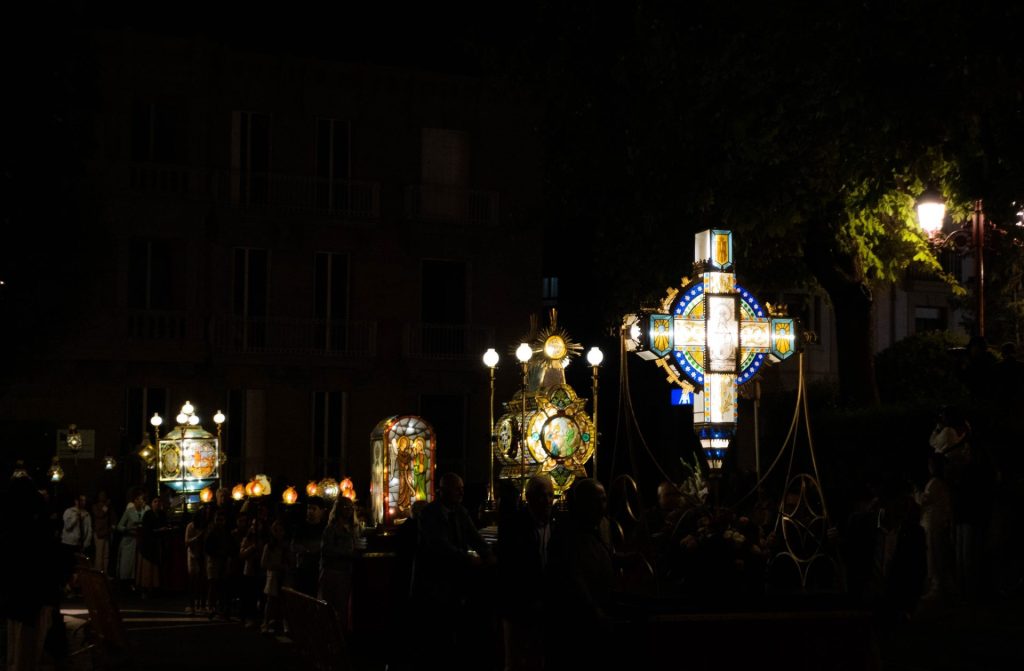
In September the festivities are held in honour of the Virgen de la Vega with the 8th being the most solemn day with the traditional Rosary of Lanterns. This route runs through the streets of Haro, starting at the Basilica of La VegaThe route goes along Ventilla Street until it reaches the Plaza de la Paz where the Hymn to the Virgen de la Vegareturning to the Basilica via Calle de La Vega. In total 136 hand lanterns plus several floats symbolising the mysteries of the rosary.
On the last day of the festival, the "The Jira" a Fuente del Moro where families and groups spend a day of fun in this part of Haro.
8. What to do in Haro to make the most of your visit?
Si quieres disfrutar de Haro y sus pueblos sin preocuparte por el transporte, Movere Fun ofrece servicio de transfer con conductor para que tú solo te preocupes de disfrutar:
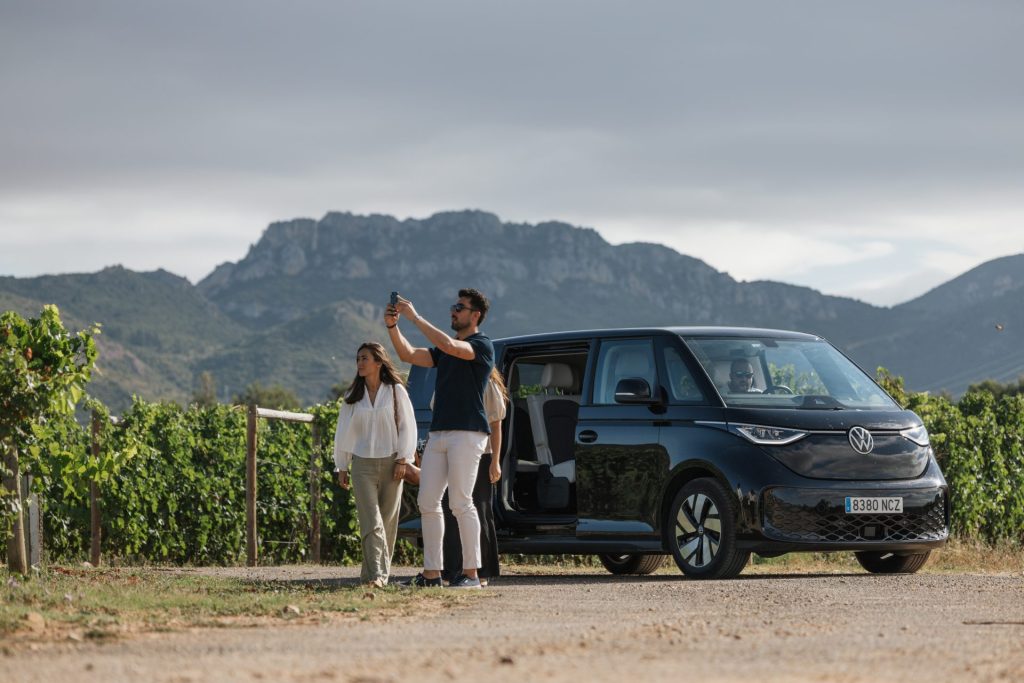
Un servicio serio y profesional para descubrir La Rioja y el mundo del vino de forma segura.
8.1. Taste the gastronomy of La Rioja in Haro

In addition to sampling the local gastronomy by touring the "La Herradura"We invite you to enjoy the delicacies of La Rioja in a more relaxed way at the table by visiting places such as La Vieja Bodega only 7 km from Haro or Restaurante Allegar en Briones.
8.2. Visiting wineries and getting to know their DOC Rioja wines

In addition to visiting the Station District, we recommend you visit some of the other family winery of the area such as Valenciso, Betolaza o Fernández Eguíluz where you will discover the day-to-day life of a winegrower.
8.3. Vuelo en Globo en Haro (La Rioja)

Flying over La Rioja in a hot-air balloon is a unique activity that has been carried out for more than 20 years from Rainbow Balloons.
The groups from 6 persons can enjoy the experience of flying in a hot-air balloon over La Rioja, toast with cava from La Rioja on landing and enjoy a delicious lunch in their facilities.
A complete experience of 4 hours in total, of which 1 hour is spent flying, that leaves no one indifferent.
You will experience the entire process from the time the balloon is inflated until it is picked up again and you receive your diploma of wind traveller.
8.4. Visitar pueblos con encanto cerca de Haro
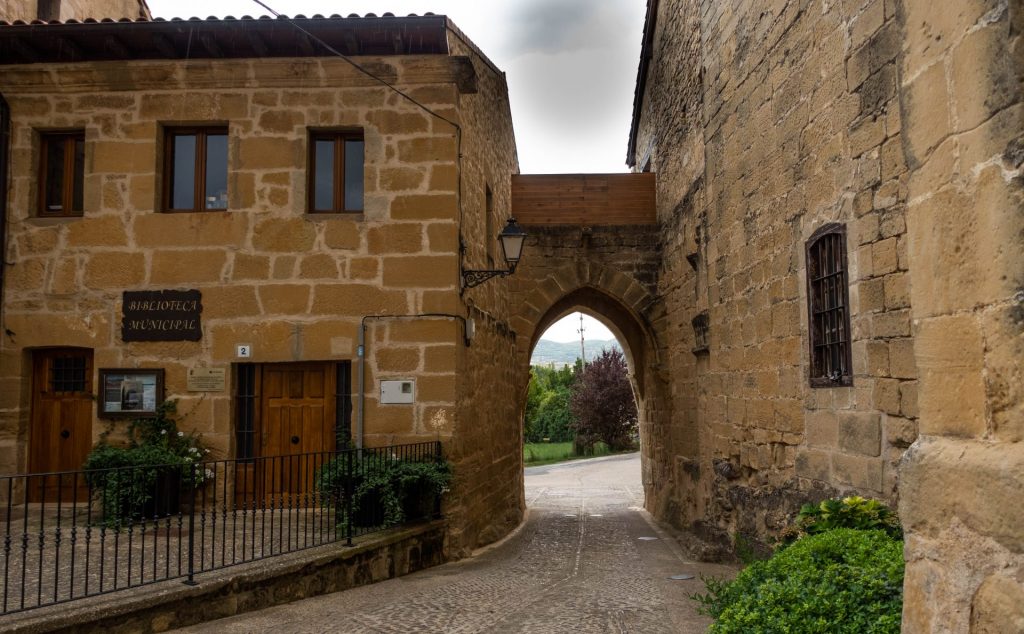
A few kilometres from Haro there is villages with a special charm that we recommend you to visit during your visit.
In this post you can take a look at these 5 villages near Haro.
-
Consider subscribing to La Rioja Premium for discover some of its secrets.



